#sacalia
Text
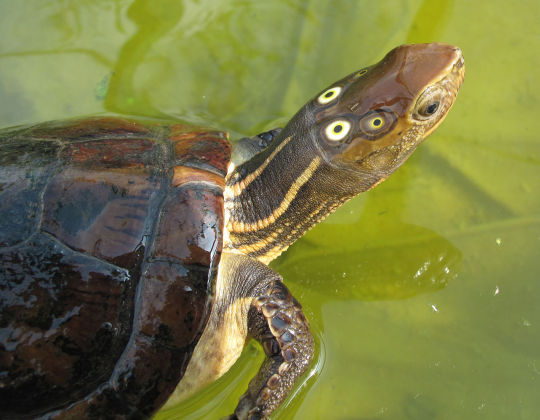
Four-eyed Turtle (Sacalia quadriocellata), female, family Geoemydidae, found in SE China, Laos, and Viet Nam
CRITICALLY ENDANGERED.
photograph by François Charles
2K notes
·
View notes
Note
tmnt ask game
🐢 and 🧶 (<<<especially the yarn one i love this headcanon👀)
Are they different species?
Yesn't....? The original plan was to have them all be different endangered species, but now I kinda want to make them the same species or just part of the same genus (i am very fond of the Sacalia genus).
Considering one of the major reasons these turtles (sacalia) are endangered is the exotic pet trade, it could very well explain how the scientists who unethically mutated them unethically got ahold of them.
DOES RAPH KNIT? (IMPORTANT)
Yoshi taught all of the turtles how to knit and sew at a very young age, so yes! Raph does knit! The boys all have their own unique trademarks and styles, and if Raph finds himself knitting way more often than the brothers' usual times then... 👁👁 hehe :3c
He's the artist of the group... artistic and autistic hehehehe
7 notes
·
View notes
Photo

Four-eyed Turtle (Sacalia quadriocellata) at Sedgwick County Zoo (at Sedgwick County Zoo) https://www.instagram.com/p/CeGt0sGrjQG/?igshid=NGJjMDIxMWI=
2 notes
·
View notes
Text

Beals Four-eyed Turtle (Sacalia bealei), family Geoemydidae, Hong Kong ENDANGERED. Photograph by Adam Franc
0 notes
Photo

Sacalia bealei [Beals Eyed Turtle] by kkchome Sacalia bealei [Beals Eyed Turtle] New Territories, Hong Kong June 2020 https://flic.kr/p/2jrzqyY
2 notes
·
View notes
Photo

FOUR-EYED TURTLE
Sacalia quadriocellata
©François Charles
How cool is this beauty?!
The endangered four-eyed turtle is a reptile of the order Testudines. Its name refers to two bright yellow or green spots that occur on the back of its head that can look like another pair of eyes.
This species of turtle occurs in southern China and Hainan, in the Annamite Mountains and northeastern region of Laos, and in the mountains of northern and central Vietnam.
Large quantities of turtle shell are used as an ingredient in Traditional Chinese Medicine (TCM). For instance, Taiwan confirmed that 940 tons of hard shelled turtle bone and 200 tons of soft shell turtle bones were imported between 1992 and 1998.
#four-eyed turtle#sacalia quadriocellata#©françois charles#annamite mountains#laos#china#vietnam#endangered species#reptile#testudinea#reptilia#animalia
135 notes
·
View notes
Photo
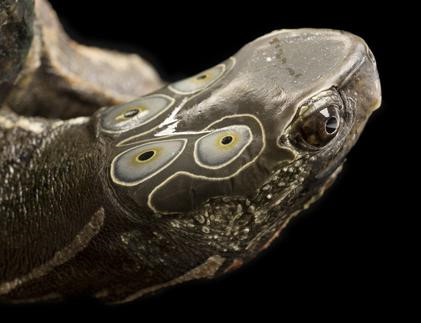


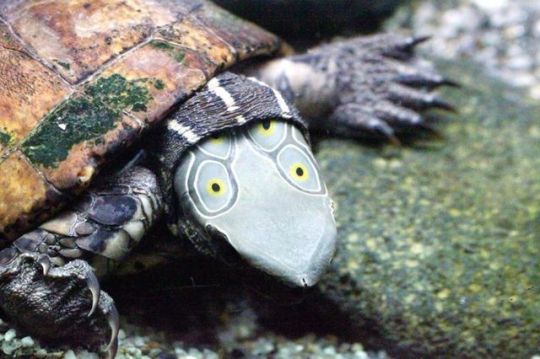



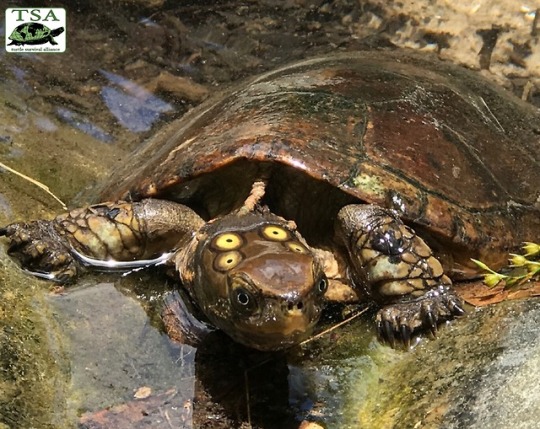
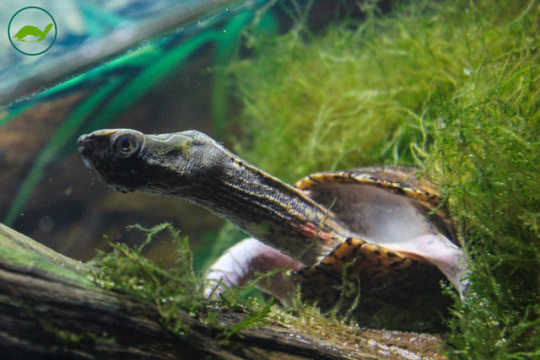

Four-Eyed Turtle
The four-eyed turtle (Sacalia quadriocellata) is a reptile of the order Testudines. Its name refers to two bright yellow or green spots that occur on the back of its head that can look like another pair of eyes. This species of turtle occurs in southern China and Hainan, in the Annamite Mountains and northeastern region of Laos, and in the mountains of northern and central Vietnam.
The four-eyed turtle can grow to a carapace length of 5.9 in. Its carapace typically ranges in color from a yellowish-tan to a deep chocolate-brown, and all turtles have a distinct pattern of lines. The turtle's head is often colorful with yellow or green eyes, yellow stripes, and a pink or red throat. Two (sometimes four) eye-like ocelli occur on the back of the head, hence the turtle's name.
Four-eyed turtles occur in freshwater streams, brooks, and ponds in woodland, often mountainous habitats. As a result of their rugged surroundings, they have adapted to become adept climbers. While their dietary preferences have not been studied in detail, it is known that they do eat a wide variety of animals and plants including crickets, worms, snails, trout chow, aquatic plants, greens and lettuces, and certain fruits.
This species is included on CITES Appendix III and listed as Endangered by the IUCN. A main factor in the decline of the four-eyed turtle is trade and demand for their shells. The Asian Turtle Conservation Network has helped publicize turtle conservation all throughout Asia. The ATCN has a regularly updated website with up-to-date news that helps spotlight the status of endangered turtles throughout Asia. There is currently an extensive communication between zoo and conservation personnel in Vietnam whose goal is to coordinate recovery programs. The recovery programs will include legal protection for the turtles which will affect turtle trading.
5K notes
·
View notes
Photo


have some turts (sacalia quadriocellata)
3 notes
·
View notes
Text
La Guardia Civil, en el marco de la operación COAHUILA, ha procedido a la detención de tres personas y a la investigación de otras 3 más (dos detenidos y dos investigados de nacionalidad alemana en Mallorca y un detenido y un investigado de nacionalidad española en Barcelona), como presuntos autores de delitos relativos a flora y la fauna silvestre, contrabando de especies protegidas y blanqueo de capitales.
En la operación se han incautado más de 1.100 ejemplares de tortugas de 62 especies diferentes, tanto adultos como crías, así como más de 750 huevos.
La operación se inició en el mes de febrero del pasado año cuando agentes de la Guardia Civil del Aeropuerto de Son Sant Joan de Illes Balears detectaron el envío de diversos ejemplares de tortugas de la especie COAHUILA. La mayoría de estos especímenes están amparados por el régimen de protección del Convenio sobre Comercio Internacional de Especies Amenazadas (CITES), donde se busca preservar la protección de las especies mediante el control de su comercio y al cual España esta adherida desde el año 1986.
Una vez inspeccionado el envío, los agentes pudieron comprobar como parte de los ejemplares presentados no se correspondían ni con los declarados en la partida ni con la documentación que los acompañaba, por lo que procedieron a su incautación.
Continuando con la operación, la Guardia Civil realizó diferentes pesquisas para dar con los responsables de este envío ya que los responsables no tenían nada a su nombre, lo que dificultó la investigación. Como resultado de ello, los agentes localizaron una finca rústica en el término municipal de Llucmajor (Mallorca), donde residían dos ciudadanos alemanes.
Una vez acreditada la actividad ilegal, los agentes practicaron un registro en la citada finca, pudiendo comprobar que el criadero era mucho mayor de lo esperado y que tenía como finalidad la cría “a nivel industrial” de diversas especies de tortugas, tanto de agua como de tierra.
Para la práctica del registro, se contó con el apoyo de técnicos de la Autoridad Administrativa CITES, así como de personal de la Fundación Natura Park. Asimismo, se procedió a la identificación de los animales, llevándose a cabo la incautación de más de 1100 ejemplares tanto adultos como crías, así como de más de 750 huevos, cifra que aumentará al haber más de 200 hembras en época de puesta.
El tráfico ilegal de estas especies afecta principalmente a las del sudeste asiático, de donde provenían las Tortugas de caja (Cuora sp.), consideradas en altísimo riesgo de extinción. También se incautaron algunas endémicas de Méjico, Estados Unidos y Canadá, y protegidas por la legislación de estos países. Además, había ejemplares de Tortuga mora catalogada como “Vulnerable” en el Catálogo Español de Especies Amenazadas.
Una vez detenidas las dos personas responsables del criadero y pasadas a disposición judicial, se decretó su ingreso en prisión. Se ha podido constatar que estas dos personas mantenían una estrecha colaboración con el responsable de una tienda de fauna exótica en Barcelona, que les servía para “blanquear” los especímenes producidos en Mallorca.
Por tal motivo, la Guardia Civil se desplazó hasta Barcelona para proceder a la entrada y registro de la tienda investigada como del domicilio del titular de la misma. En el domicilio situado en una finca rústica de la provincia de Barcelona se hallaron diferentes piscinas y depósitos con especies protegidas en muy mal estado de mantenimiento.
Ejemplares incautados
Entre los ejemplares incautados en esta operación se han encontrado 14 de las 50 especies más amenazadas del mundo.
Listado de especies en peligro crítico de extinción
Cuora mccordi (1 macho, 3 hembras)
Cuora aurocapitata (7 ejemplares)
Cuora trifasciata (36 ejemplares)
Mauremys annamensis (10 ejemplares)
Siebenrockiella leytensis (5 ejemplares)
Cuora pani (25 ejemplares)
Testudo kleinmanni (8 ejemplares)
Cuora picturata/Cuora bourreti/Cuora galbinifrons (ejemplares congelados)
Terrapene coahuila (1 ejemplar)
Astrochelys radiata (2 machos y 2 hembras)
Glyptemys muhlenbergii (4 ejemplares)
Cuora cyclornata (3 ejemplares)
Cuora zhoui (Ejemplares pendientes de identificar por inmadurez)
Listado de especies en peligro
Mauremys nigricans (44 ejemplares)
Malacochersus tornieri (38 ejemplares)
Cuora flavomarginata (31 ejemplares)
Cuora mouhotii (21 ejemplares)
Sacalia bealei (1 ejemplar)
Colaboración internacional
Esta investigación se ha llevado a cabo en el marco de la operación “Naultinus” de Europol, que ha colaborado en el análisis de información y la coordinación con otros países de la UE, como son Alemania, Francia, Italia y Austria.
Tráfico ilegal de especies
El tráfico ilegal de especies de fauna y flora supone una de las principales amenazas para la conversación de la biodiversidad. Es uno de los objetivos prioritarios de la lucha contra la delincuencia organizada para la UE. Por este motivo, España cuenta desde abril de 2018 con PLAN TIFIES, Plan de acción español contra el tráfico ilegal y el furtivismo internacional de Especies Silvestres, impulsado por la SG de Biodiversidad y Medio Natural del Mº para la Transición Ecológica.
Las tortugas (orden Testudines) se encuentran dentro de los vertebrados mayores más amenazados del planeta. De un total de 365 especies reconocidas, 148 de ellas están consideradas amenazadas por los criterios de la IUCN, dentro de las categorías de Vulnerable, peligro o peligro crítico. En la historia reciente, se han extinguido 7 especies y 3 subespecies de tortugas conocidas.
Las poblaciones de quelonios, actualmente sufren una gran presión por parte de los humanos. Sus poblaciones se ven amenazadas por el desarrollo, agricultura y la contaminación de la tierra y el agua. También son preciadas para su consumo, tanto su carne, como sus huevos. En algunas partes del mundo son usadas en la medicina tradicional. Y el comercio de animales, tanto legal como ilegal, amenaza a muchas de estas especies.
La operación ha sido dirigida por la Sección del SEPRONA de la Guardia Civil de Islas Baleares, con el apoyo de la Unidad Central Operativa de Medio Ambiente (UCOMA), en Mallorca y en la provincia de Barcelona.
La Guardia Civil desarticula una de las mayores organizaciones a nivel internacional dedicada al tráfico ilegal de especies amenazadas de tortuga La Guardia Civil, en el marco de la operación COAHUILA, ha procedido a la detención de tres personas y a la investigación de otras 3 más (dos detenidos y dos investigados de nacionalidad alemana en Mallorca y un detenido y un investigado de nacionalidad española en Barcelona), como presuntos autores de delitos relativos a flora y la fauna silvestre, contrabando de especies protegidas y blanqueo de capitales.
0 notes
Text


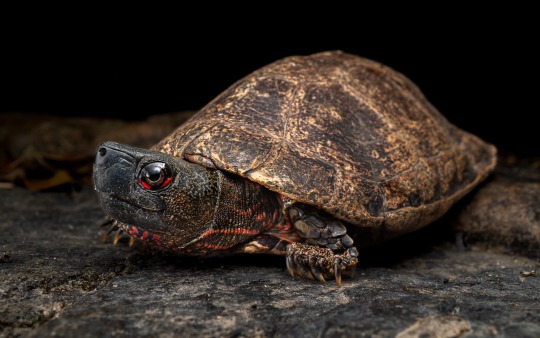
Beals Four-eyed Turtle (Sacalia bealei), family Geoemydidae, Hong Kong
ENDANGERED.
Four eyed turtles are named for the "eye spots" on the tops of their heads.
Photograph by Adam Franc
682 notes
·
View notes
Note
How can you ship scira and scallison if you hate Scott
I actually don't ship scallison ....I just prefer them over sacalia ....but maybe hate was a strong word ......technically it's not Scott's fault what he's doing ..... but the writters . And I definitely hate them .
0 notes
Photo


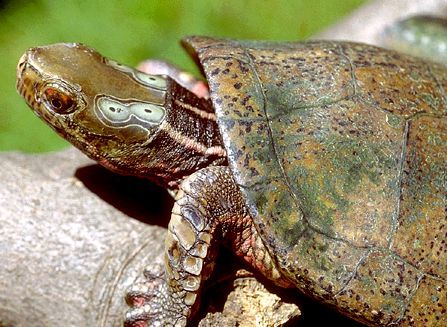
Four Eyed Turtle (Sacalia quadriocellata) -
Often confused with the Beal's Eyed Turtle, which has 2 ocella without the black center. These small turtles grow to about 5 inches long and are native to Southern China. They live in small ponds and rivers and are adept at climbing rocks and banks.
The coloration of this turtle varies between individuals. The neck stripes can go from pale yellow to pink to dark red. The irises can be yellow, green or dark brown. There is speculation that some males have interbred with other species to create hybrid species, but the designs are so similar that it is difficult to distinguish as its own species. They feed on small invertebrates, aquatic plants and some fruits.
Like many turtles, especially in Asia, it is endangered. Over hunting and pet trade brings their population number down by a large percentage. Many of the turtles sold have health problems or mutations.
Photos: (top) (bottom left) (bottom right)
281 notes
·
View notes
Text

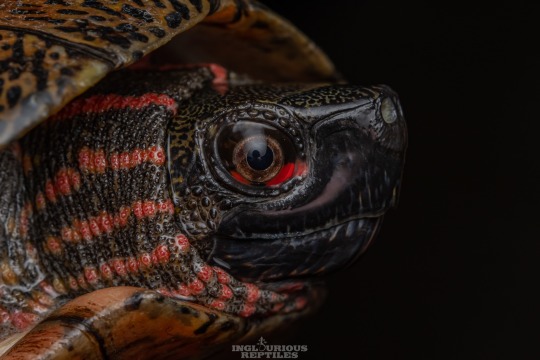

Beale's Four-eyed Turtles (Sacalia bealei), T - female, M&B - male, family Geoemydidae, Hong Kong
ENDANGERED.
photograph by Inglourious Reptiles
270 notes
·
View notes
Text

Beals Four-eyed Turtle (Sacalia bealei), family Geoemydidae, Hong Kong. ENDANGERED. Four eyed turtles are named for the “eye spots” on the tops of their heads. Photograph by Adam Franc
0 notes